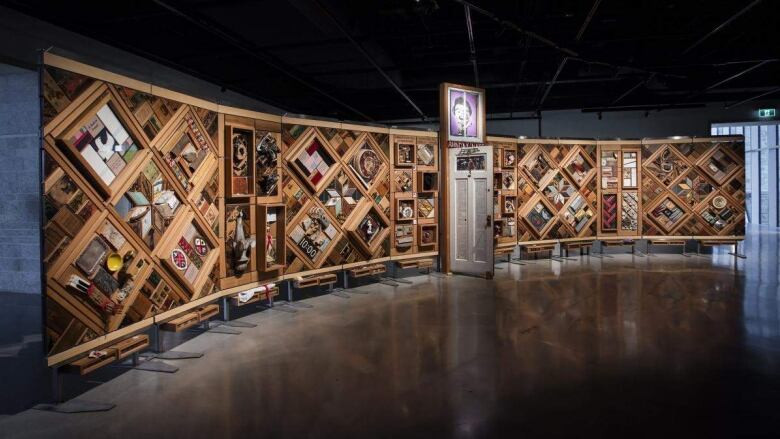Kwakwaka’wakw and Coast Salish multi-disciplinary artist Carey Newman is making a national appeal to gather sounds from the cultures that were targeted by residential schools.

Camosun College
The creation of the VR version of the Witness Blanket, being led by Camosun Innovates, allows visitors to explore the project with a VR headset, making the experience accessible from coast to coast to coast.
Working with Kirk McNally, Associate Professor of Music Technology at the University of Victoria and a team of Indigenous musicians, Camosun Innovates will integrate the recordings into the virtual reality (VR) Witness Blanket, creating a ‘soundtrack of resilience.’
“In virtual reality, sound is part of the experience and audio allows people to explore the blanket in a new way,” explains Newman who is Impact Chair in Indigenous Art Practices at the University of Victoria. “If each of the objects on the Witness Blanket had a voice, what would they sound like? What language would they speak? What songs would they sing?”
The original Witness Blanket is made of objects gathered from residential schools, churches, government buildings and cultural structures. The creation of the VR version of the Witness Blanket, being led by Camosun Innovates, allows visitors to explore the project with a VR headset, making the experience accessible from coast to coast to coast.
“Each of the artifacts tells a different story about residential schools and the children who were impacted during that period,” explains Camosun Innovates Director Richard Gale. “Rather than pulling out a drawer and looking at something in a museum, you can reach out and see what each object really looks like in your hand. Collecting sounds will augment the visual impact of the installation, making it more personal, more influential on many levels.”
Looking for a way to bring something unique to the VR experience, Newman and team have launched a national appeal for further contributions, but this time for sounds. He hopes that participants will contribute auditory artifacts in a similar way to how the project has collected objects from residential schools.
People are invited to record and provide a sound that can be woven into the virtual reality experience. This could include the music of traditional instruments, the sounds of cultural activities like paddling or carving, the ambient tones of the natural world such as rain or wind, as well as spoken languages, songs or any other sound associated with a person’s Indigenous culture or community.
Partners for this project include Camosun College, The Canadian Museum for Human Rights, and the University of Victoria, and is supported by contributions from the College and Community Social Innovation Fund, the Canada Council for the Arts, TELUS and a multi-year grant from the Natural Sciences and Engineering Research Council (NSERC) College and Community Society Innovation Fund.
To learn more about the project or to make a sound contribution visit the Witness Blanket sound collection project.
A video on the Witness Blanket VR: Call for Sound Contribution can be viewed here: https://youtu.be/7W0mIzHczFQ.
Learn more about the original Witness Blanket by visiting witnessblanket.ca.
Contact information
Rodney Porter
Camosun College

